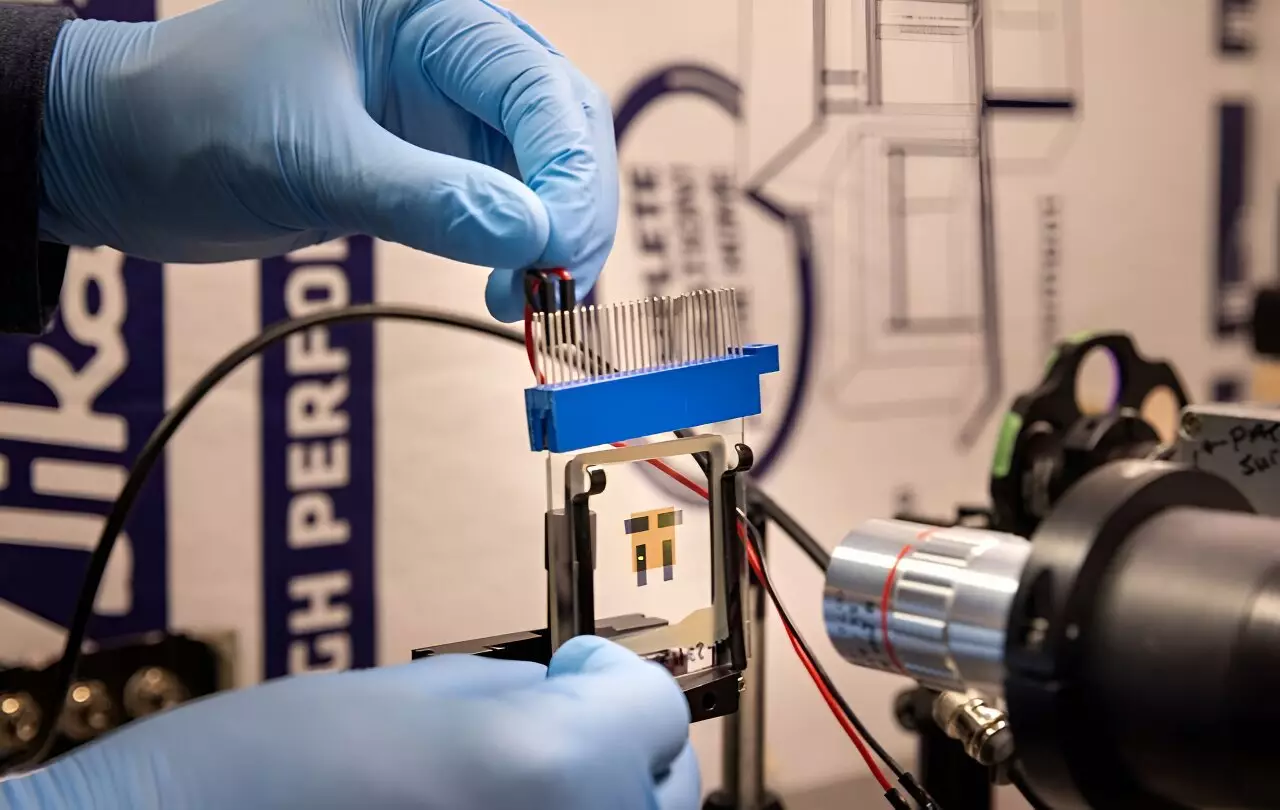A groundbreaking advancement in organic light-emitting diode (OLED) technology is paving the way for a new generation of night vision devices. Researchers from the University of Michigan are at the forefront of this innovation, revealing how their lightweight OLED glasses could replace the traditional, cumbersome night vision goggles currently in use. As their research appears in Nature Photonics, the implications of this new technology are significant—offering enhanced practicality, reduced costs, and improved user experience for prolonged usage.
Current night vision technology has primarily relied on image intensifiers that function through a complex mechanism involving the conversion of near-infrared light into visible light. This process comprises multiple steps: it begins with incoming light hitting electrodes, transforming into electrons that are drastically amplified as they collide with a thin disc filled with microscopic channels. This intricate methodology allows for immense amplification—about 10,000 times—outdoor users could see in the dark. However, the bulkiness, high voltage requirements, and vacuum layers inherent in these devices limit their utility and comfort. The cumbersome design poses significant obstacles for usability over extended periods, making the development of a compact and efficient alternative paramount.
The newly developed OLED devices herald an innovative departure from traditional night vision approaches. By directly converting near-infrared light into visible light with an amplification factor exceeding 100 times, this technology eliminates the need for heavy apparatus associated with image intensifiers. Chris Giebink, a professor at the University of Michigan and co-author of the research, emphasizes the remarkable thinness of this OLED device, measuring less than a micron thick—significantly slimmer than a human hair, which averages about 50 microns. This impressive miniaturization not only enhances portability but also expands possibilities for various applications, sparking excitement regarding the potential for consumer-oriented night vision products.
One of the most remarkable features of this OLED technology is its operational efficiency. Unlike traditional systems that operate at high voltages, these new devices require a considerably lower voltage, which will reduce power consumption. This energy efficiency translates into longer battery life—an essential factor for military personnel, hikers, or anyone needing extended periods of night vision. The underlying mechanism is equally fascinating: the OLED integrates a photon-absorbing layer that converts infrared light into electrons, followed by a five-layer stack of OLEDs, ensuring that for every electron traversing the OLED, five visible light photons are emitted. This mechanism results in a lucrative positive feedback cycle, leading to extraordinary light amplification from minimal inputs.
An additional breakthrough lies in the memory-like behavior exhibited by the device, termed hysteresis. This characteristic allows the OLED to “remember” light patterns, impacting its output based on previous light exposure. Giebink notes that this unusual capability enables the OLED device to function more like the human visual system, potentially revolutionizing how images are processed and interpreted. As the device retains information on past inputs, the prospect of achieving efficient computational vision systems becomes more feasible, breaking away from traditional methods reliant on external computing units.
The path toward widespread implementation of these advanced OLED technologies looks promising. Researchers successfully fabricated the device using inexpensive, off-the-shelf materials, ensuring that production processes could scale effectively without significant cost burdens. This attribute fortifies the potential for brand new applications beyond night vision, including augmented reality, wearable technology, and advanced imaging systems in diverse fields such as medical diagnostics and surveillance.
The innovations rooted in OLED technology represent a transformative opportunity in various industries. Night vision could become more accessible and practical, with lightweight glasses replacing traditional goggles. The implications extend beyond mere portability; they herald a potential shift in human-computer interaction, leveraging characteristics of biological systems to enhance user experience. As research continues and technology advances, the promise of these OLED devices might soon be realized, reshaping how we perceive the world—especially under the cover of darkness.


Leave a Reply